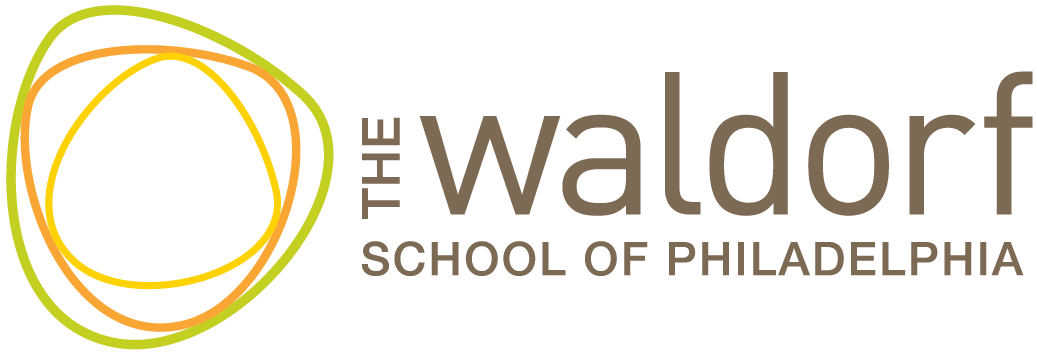In Waldorf Education, STEM is STEAM
The relation between art, music, science and mathematics is clear; music and math are inseparable, as Pythagoras first told us, "There is geometry in the humming of the strings, there is music in the spacing of the spheres." The ultimate representation of art, as both science and math, is Leonardo Da Vinci’s Vitruvian Man. In fact, the STEM behind art can be seen in any geometric representation or any attempt to create a three dimensional world on a two dimensional canvas.
Art brings a much needed depth and beauty to the world of STEM.
Which is why Waldorf Education presents its students with STEAM -- not to soften or bring “fun” to an un-fun topic -- but to bring realism and relevancy to our growing world of bits, dynamic loads and relativity. Artistic and scientific creativity are not very different. If one were to describe an upcoming class topic by mentioning the words -- space, time, dimension, perspective and consciousness -- it is unclear if the context of class will be physics or art. This reality is what shapes the Waldorf Math and Science curriculum.
In Waldorf Education, everyday life and beauty are brought into science, engineering, and math.
Science: The methodology for science instruction in Waldorf Education is based on observation and Socratic Inquiry. Students of all ages are immersed in observation and manipulatives, experienced during regular nature walks, gardening, cooking, form drawing and experimentation, to name only a few. Waldorf teachers begin not by lecturing on rules and formulas, but by showing those rules in action through experiments, the natural world, art and music. These real world examples and applications are used to then guide students to use Socratic inquiry and observation to connect logical parts to the whole, which helps them deeply understand the science within our world.
Technology: While Waldorf schools eschew technology in elementary and middle school, that does not mean students are not learning the concepts behind coding and algorithmic thinking. Take, for example, the link between knitting and coding. Thinking in 3D while producing in binary string is at the heart of all computer science. Nothing shows this at work more than knitting complex patterns like socks and hats -- something all our students will learn to do. This 3D thinking happens also in woodworking.
As data scientist and machine learning expert, Brad Linblad, says in his CodeBurst article -- Why Woodworking Will Make you a Better Coder: "The underlying principles used by the coder and the woodworker couldn’t be more similar." He goes on to explain how the disciplines share template use, troubleshooting, reverse engineering and more.
Engineering: Waldorf students build and create, every day, using engineering concepts. Our third grade class, for example, spends main lesson time on the drawing and configuration, measuring and implementing a structural creation for the school. Labeled the “building project,” it is just one example of how engineering is placed into the curriculum. Older students also design and build their own chairs, by hand, in woodworking. Younger children sew and knit forms which require many engineering and geometrical concepts. And, of course, geometric and other forms of drawing and art all support the logic needed to make engineering concepts reality.“As a designer of sustainable products, I am always thinking about the way materials interact and how to reduce the environmental impact of the products I create. Attending the Waldorf School of Philadelphia from Kindergarten through eighth grade taught me to think creatively and to imagine my own solutions.”--Griffin Linsalata, Class of 2011
Art: As you can see, the “A” exists everywhere within the STEM narrative at Waldorf schools. It can be taught separately and achieve positive results, but its incorporation within each of these other STEM disciplines helps tie meaning, beauty and practicality into all the other subjects. Music brings soul to math, art brings life to geometry, woodwork brings purpose to engineering, and cooking what you grow in the garden brings applicable relevance to science.
Math: When the students are young, math curriculum is introduced through story, movement, recitation, and rhythm. Manipulatives make concepts like division (dividing gems among classmate) and fractions (slicing pizza for all) concrete realities -- forever silencing the “when will I use this?” mantra of the bored student. All age students, from very young to adolescence, experience daily musical training, which studies show aids the learning of abstract mathematical concepts. Older students, move from storytelling in math to story problems, using practical applications in mathematics for things like cooking, music, geometric drawing, and mathematics in art.
Does this methodology work? A California State University Study asks this very question and takes an honest look at all facets of Waldorf and Public School science curriculum. The results?
“Waldorf students scientific reasoning and problem solving skills appear to be at or slightly above those of their counterparts in mainstream educational settings.”
How do our students fare internationally on assessments? During the TIMSS assessment, “Waldorf 8th grade students outperformed U.S. students and international students in the category of correct answers (98% vs. 90% and 92%) and in providing a correct description and interpretation of the solution (98% vs. 81% and 88%).”Follow the science, follow the soul, and one will quickly conclude the STEM needs to be STEAM in order to effectively reach our students and inspire them to create and problem solve in our modern world.To learn more about Waldorf Education contact The Waldorf School of Philadelphia or plan a visit.




